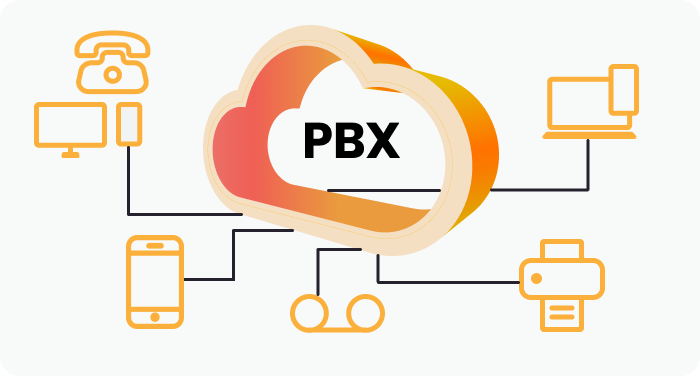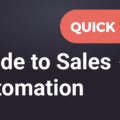Having an effective phone system is one of the crucial things to consider when running a business. We’ll show you what Virtual PBX is and tell you everything you need to know in 2024.
The unexpected changes in the business world have created a particular need for every respectable company. Given that almost any business has a digitally-based support team, it is crucial for them to manage all the incoming calls properly. And that is precisely where a Virtual PBX system steps in. But what is Virtual PBX and why should you integrate it into your tech stack?
Table of contents
1. What is Virtual PBX?
2. Why do companies need such a system?
3. What are the benefits of using a Virtual PBX?
4. When is the right time to implement a Virtual PBX system?
5. How to deploy such a phone system?
6. Conclusion
7. FAQ
Deploying a new system into your company’s workflow might look like a tricky thing. And it really is, unless you choose the right tools to help you increase your overall efficiency. Yet, choosing the appropriate software requires a deep knowledge of all the associated aspects.
But before jumping into detail about how your company can easily manage an oversized volume of phone calls, let’s find out what is a Virtual PBX System and why you should care about it.
What is Virtual PBX?
First things first, PBX stands for Private Branch Exchange. A Virtual PBX System is a software tool that allows the team members to manage incoming calls and switch them between different departments properly.
Essentially, Virtual PBX is a business phone system that helps employees manage all the incoming phone calls using an Internet connection.
What are the basic functions of a Virtual PBX?
When it comes to choosing a Virtual PBX for your company, it is crucial for you to properly understand the basic functions and the more advanced features you can take advantage of.
Most basic Virtual PBX systems come with a set of standard functions, including:
- Call management
- Call forwarding
- Call blocking
- Blacklist
- Transfer calls
- Local connection
- Conference calls
- Remote office
- Customer satisfaction
- Call recording
- Auto-attendant
However, if you are planning on offering your customers a delightful experience when they are calling your company, it might be a better choice to implement a more complex Virtual PBX. Such tools come with different interesting features, including advanced call routing based on interactive voice response.
Basically, the auto attendants will perform simple call forwarding operations using an interactive system (keypads or AI-based voice recognition) whenever a phone rings.
Why do companies need such a system?
Using a Virtual PBX might not be your first concern when thinking about running your company. However, these business phone systems will support you when it comes to serving customers in the most effective way.
Although you might be a small business owner, think about Virtual PBXs as more of an investment than a cost. Think about the last time you called a company, and you just had to wait with the basic beep-beep sound until one of the employees picked up the phone.
And now compare it with the last time you called a more premium sales tool with a robotic voice that guided you to the correct department in no time.
In this rapidly growing business world, the traditional phone system is not a viable option anymore. Therefore, you should adapt to the increased use of cloud PBX (VoIP telephony).
Related: 8 Small Business Trends You Should Know About to Stay Ahead of the Game
What are the benefits of using a Virtual PBX?
Regardless we are talking about small businesses or enterprise-level companies—the business needs are pretty similar. You will need an effective method to route calls between your departments and diminish the maintenance fees spent on complicated wire-based phone systems.
There are 3 main benefits your company will enjoy after deploying a business phone service:
- Premium experience for your customers
- Reduced waiting times
- Increased efficiency during phone calls
Premium experience for your customers
If you still do not see the Virtual PBX as a solution for your clients to feel delighted, compare business communication between two companies that have a hosted PBX solution with calling random phone numbers that are thought to be owned by a small business. Everything seems to be more premium, more classy and more enjoyable.
Although the most important factor when it comes to having a premium experience is the product itself, customer support is also crucial. Therefore, instead of having an employee forward calls from one department to another, why not keep yourself focused with an on-premise PBX?
Reduced waiting times
Picture this: you are calling a travel company to discuss a future trip you are planning for your family. Yet, you have been waiting for 15 minutes, and no human being has still answered your phone. You got 2 different options: you hang up on them and look for another travel company, or keep waiting. Which one are you choosing?
If you choose to hang up on them and start looking for another company in the field to get the services from, you have already concluded why a reduced waiting time is crucial for delightful customer service.
Unless you have a phone service that is ready to forward all the incoming calls to the appropriate department and have them split between the available operators, your clients will end up waiting tens of minutes before someone picks up the phone. And they might choose the same option as you did one paragraph ago.
Increased efficiency during phone calls
Calling a company and getting forwarded from one department to another for 10-straight minutes is surely something you want to avoid. Therefore, why not spare your clients from having to explain their problems to several people before finding the right person to assist them?
That only saves you time and leaves your call center operators ready to take another call. Instead of having the Finance department listed to a client who has just called to ask how they could return a product, let them do their job and enjoy the highest levels of efficiency.
When is the right time to implement a Virtual PBX system?
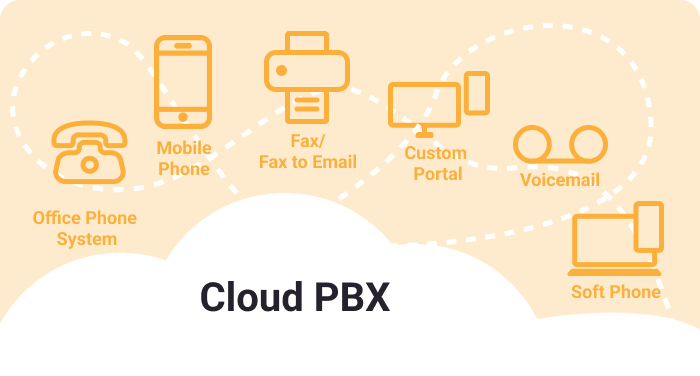
Right. Now.
It is the most appropriate and correct answer. It is just like we are talking about safety equipment. If you are wondering whether you should wear safety equipment or not … you should probably wear it.
That is why you should deploy a Virtual PBX in your tech stack today. The sooner, the better. For both you and your customers.
How to deploy such a phone system?
When it comes to deploying a Virtual PBX, it is crucial for you to properly understand all the hardware requirements and other implications of such systems. Some PBXs are more complex, require more potent hardware components and have drawbacks.
Finding the best business phone systems
There are surely IP telephony systems that offer you all the required features without struggling with 640 GBs servers and a virtual machine running all the time in your office. Ringblaze is a VoIP system ready to offer you everything without any modifications to your infrastructure.
The best thing about it is that it only needs 15 minutes to configure your first widget. All the basic functions will be completely operational within this time. You will be able to serve your clients without worrying about calling your service provider and arranging different phone numbers for all your operators.
Why choose Ringblaze?
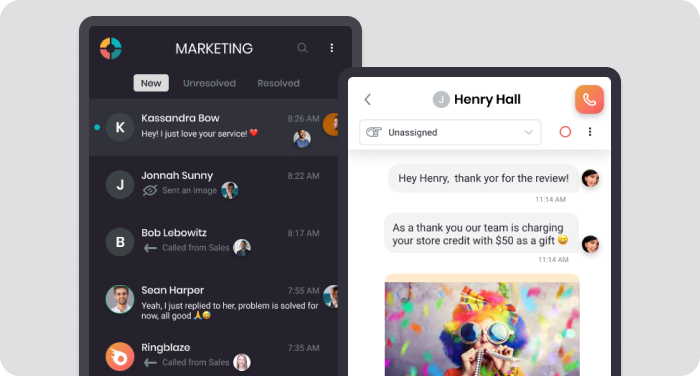
With an extensive variety on the market, choosing the best Virtual Phone System for your company might seem like one of the most challenging jobs on Earth. Yet, when looking at each specific function you might need, the answer becomes clearer.
Ringblaze comes with a ton of integrated features that will help you reach new peaks in effectiveness matters. Some of the most popular ones are:
- Shared call inbox
- Call recording
- One-on-One onboarding sessions
- Call and Message Export
- Shareable call history
Although it might seem like a costly solution for your company, Ringblaze comes with a business model that includes only one pricing plan. This way, every customer gets access to all the available functions without paying extra for a particular feature.
Depending on the exact service you are using, you will have to pay different prices. For example, if you plan to process an inbound call from a local customer, you will not have to pay anything regardless of the time spent.
However, messages sent using the toll-free connection will be charged starting from 0.03 USD per unit. Fortunately, all the pricing-related information is clearly stated in the Terms of Service you agree to when joining The Club of Effective Business Managers that Use Ringblaze.
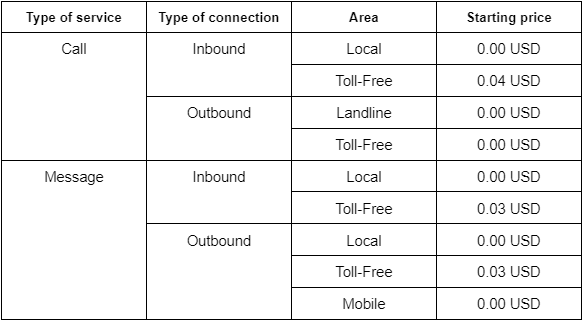
The updated cost of the plan as well as the pricing for Voice & Message services can be easily found on the Pricing section of the official website. And because you are interested in getting the best solutions for your company, we have an exclusive tip.
Choose the annual billing to save up to 20% of the total cost of your subscription.
Related: Which Is the Best Business Phone System for Your Company?

Conclusion
To put everything in a nutshell, having an on-premise PBX is one of the best choices you can make for your company. Although it might seem that you do not need it at first, you will surely agree with us after trying out the Ringblaze free trial. There is no need to worry if your phones connect properly anymore, so you do not miss a call during business hours.
Virtual PBX: FAQ
Do I need to know a lot about software and hardware to manage a virtual phone system?
Having a virtual phone system does not necessarily require having a lot of technical knowledge. You can easily get a phone system deployed within 15 minutes, thanks to the easy setup.
How much does it cost to deploy a fully customizable virtual phone system?
Depending on the business phone system you choose, the pricing starts from $15 per month for your entire company.

How does a Virtual PBX work?
A Virtual PBX uses your Internet connection to allow you to perform and receive mobile calls. These systems are great for users aiming at offering customer support for their product and discussing potential collaborations with different companies.
What does PBX mean?
PBX stands for Private Branch Exchange and is a term commonly used in the telecommunication industry. It refers to a system that can manage incoming calls using a VoIP (Internet) connection.
What is the main purpose of a PBX?
The primary purpose of a PBX is to help business owners reach new peaks in matters of efficiency and allow their customers to enjoy a delightful experience.
Your company can easily manage a high volume of incoming calls while also offering a great customer experience. It is all about choosing the right tools to include in your tech stack.
